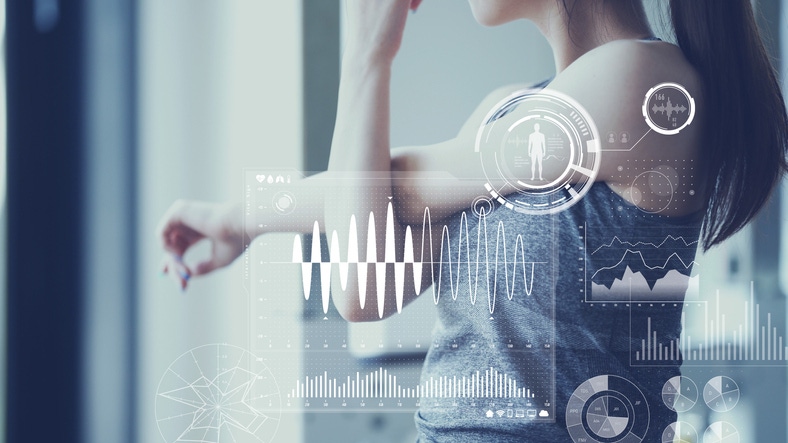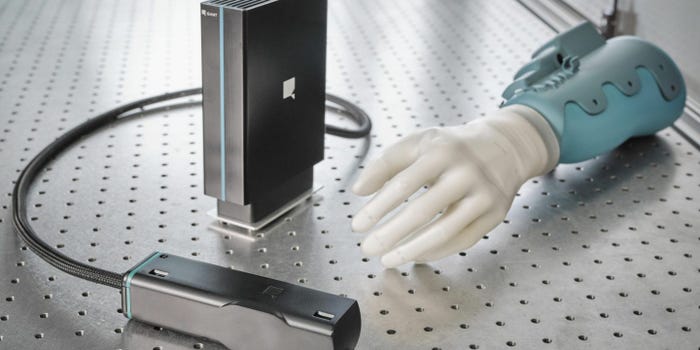Advances in noncontact sensor technology could drive digital health progress, but obstacles persist.
June 4, 2020

Key takeaways from this article:
Wearable technology has loomed large in the digital health landscape, but in the future, noncontact sensor technology could play a growing role.
Growing interest in population health could also drive digital health technology adoption, such as contactless fever monitoring in public spaces.
Traditional workflows based on in-patient acute care.
Telehealth adoption has exploded, helping fuel a transition to virtual care for many common ailments that health care observers have long promised.
But advances in noncontact sensor technologies could fuel more progress, according to Frost & Sullivan, which anticipates the overall remote patient monitoring segment to grow at a compound annual growth rate of nearly 20% from 2019 to 2023.
[IoT World, North America’s largest IoT event, is going virtual August 11-13 with a three-day virtual experience putting IoT, AI, 5G and edge into action across industry verticals. Register today]
In the initial wave of digital health, many traditional medical devices gained the ability to communicate patient data wirelessly. Meanwhile, the rise of wearable devices has commoditized pulse monitoring and other metrics. While wearable devices such as smartwatches have become popular, they aren’t mainstream. Only one in five Americans uses such devices, according to Pew Research. Wearables can be uncomfortable and relatively expensive — especially those that go beyond mere step- and pulse-counting.
Advantages of Noncontact Technology
Noncontact technology offers advantages compared with wearables, according to Frost & Sullivan. First, by not requiring patients or clinicians to physically interact with such systems, noncontact sensors simplify health condition monitoring and spot health problems unobtrusively. Think of sensor technology mounted beneath a mattress that can detect vital signs in a hospital or epileptic seizures in a patient’s home. Video-based technologies armed with machine learning can monitor patients after surgeries or track their medication adherence. One startup has developed a vital sign monitor that works by analyzing blood flow in the cheeks via a smartphone camera.
As medical professionals seek new ways to curb infectious diseases, noncontact technologies present a bright future, predicted Ashish Kaul, a senior research analyst at Frost & Sullivan. Already, non-contact patient monitoring techniques have shown promise in tracking patients with COVID-19 infections, Kaul said.
Many noncontact sensors for patient monitoring also can be readily integrated with smartphones with apps for either patients or health care workers. With more than 80% of Americans owning a smartphone according to Pew Research Center and disease awareness improving, a mature phase of remote patient monitoring technology could begin in the next two to four years, according to Kaul.
Other factors that could drive adoption of noncontact patient monitoring technology are advances in Doppler radar, infrared and sound analysis, and machine learning. Surging interest in noncontact monitoring technology to detect fevers and coughing episodes as well as enforcing social distancing measures in public could also drive awareness in noncontact technology. “After this pandemic, we will keep on using such technologies,” said Alicia Asín, CEO of Libelium. “Traditionally, many people got the flu in the workplace. You could reduce the number of people who get ill at a company each year if you could tell people with a fever to work from home.”
Breaking Old Habits
While also optimistic about advances in noncontact sensors and growing interest in telehealth, the scope of health care transformation hinges on changes in incentives and behavior, said Bill Betten, president of the consultancy Betten Systems Solutions. Much of the health care ecosystem in the U.S. prioritizes in-patient care. “The health care system is largely reaction-based,” Betten said. A large part of the promise of remote patient monitoring is to prevent negative outcomes. But the reality is clinicians generally have the incentive to prioritize quantity of care over quality. “Think of hospitals like factories,” Betten said. “They want their machines running all of the time, and patients running through with money.”
While the Affordable Care Act beefed up support for preventive health services and instituted penalties for hospital readmissions, health care in the U.S. continues to prioritize treatment of those who are ill. Only 3% of U.S. health care expenditures focus on prevention. Other digital technologies like electronic health records also “often emphasize financial matters over caring for patients,” Betten said.
Expanding access of preventive care and remote patient monitoring will depend on broad shifts throughout the health care ecosystem.
Ultimately, Kaul sees noncontact remote technologies as an efficiency boon for medical professionals. “There will be some initial hiccups like increased false alarms, but improving device accuracy using advanced sensors and communication technology will [help] alleviate such problems in the future,” he said.
“The health care industry has slowly started understanding the significance of digital technology such as telemedicine and remote patient monitoring in the current pandemic situation,” Kaul said. Digital technologies are becoming embedded in more clinicians’ workflows, which “could well be the tipping point for the shift in preference amongst physicians from traditional to digital health technologies,” Kaul added.
About the Author(s)
You May Also Like
.png?width=700&auto=webp&quality=80&disable=upscale)
.png?width=700&auto=webp&quality=80&disable=upscale)

.png?width=300&auto=webp&quality=80&disable=upscale)
.png?width=300&auto=webp&quality=80&disable=upscale)

